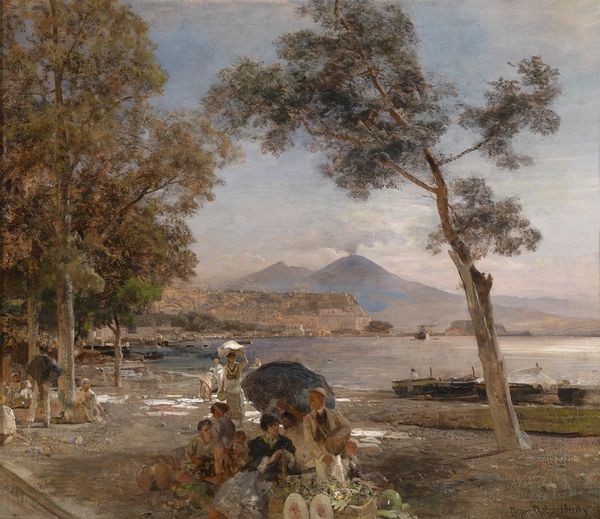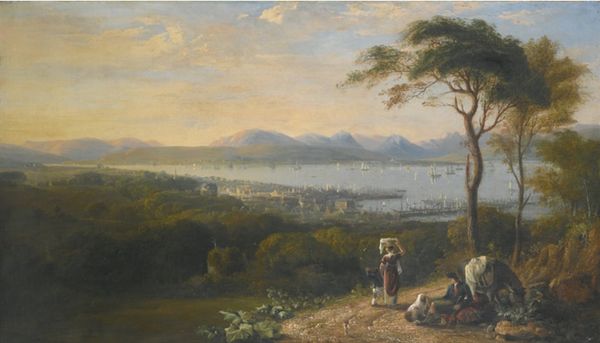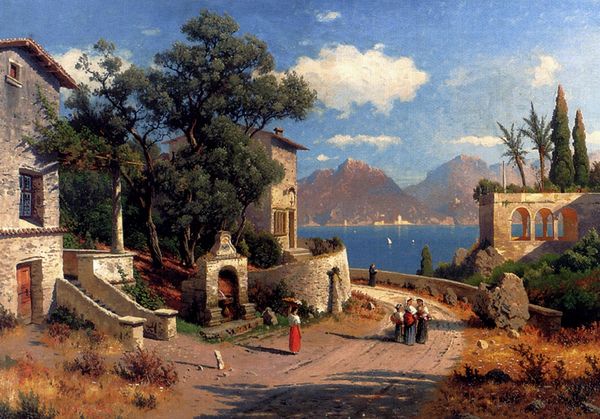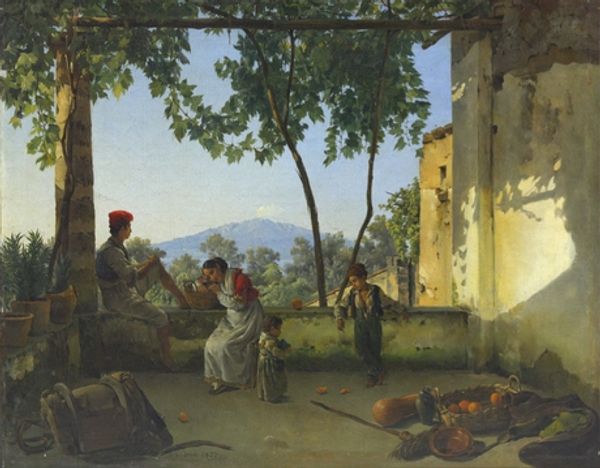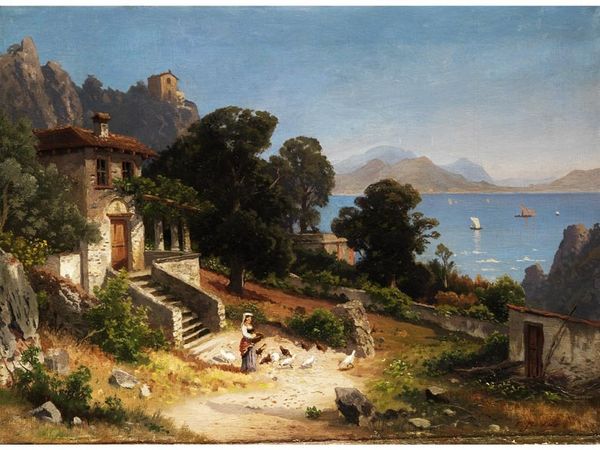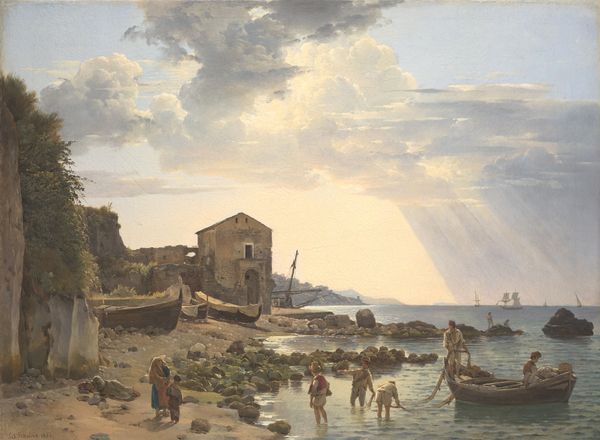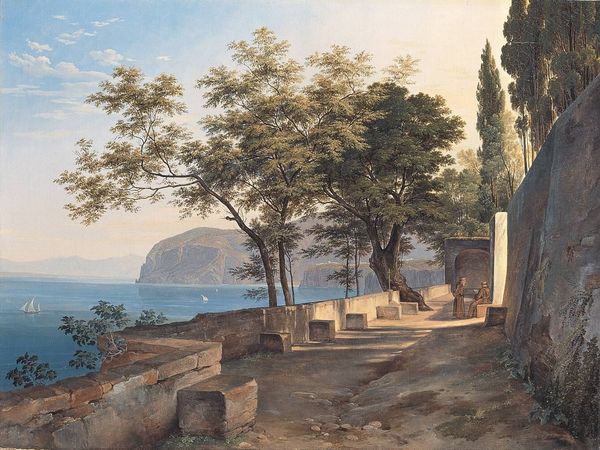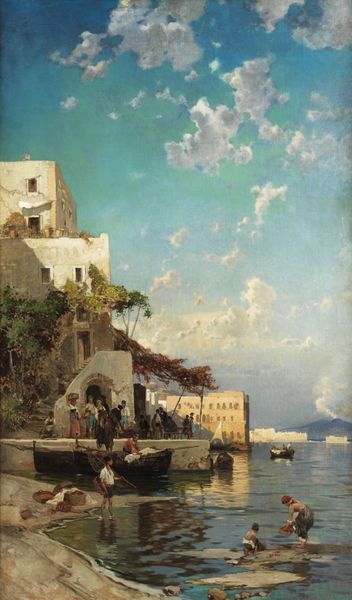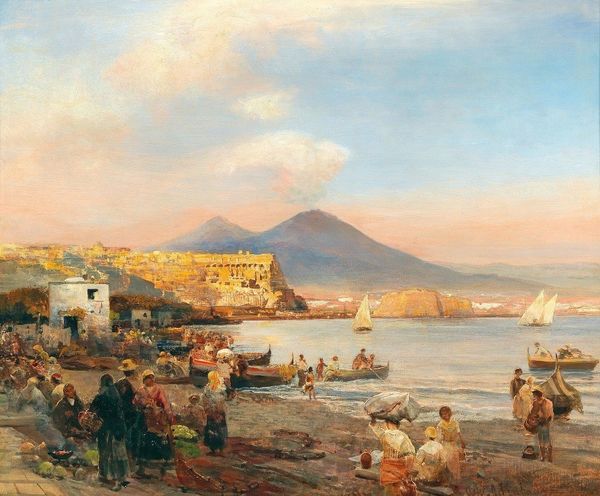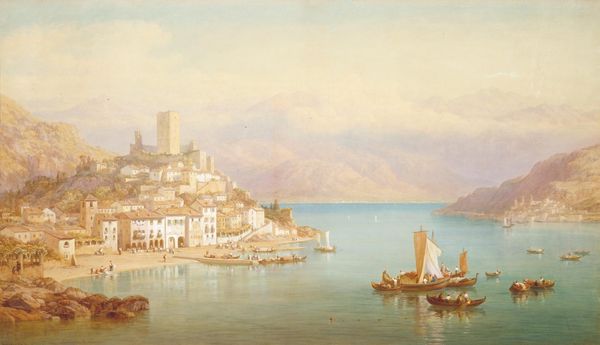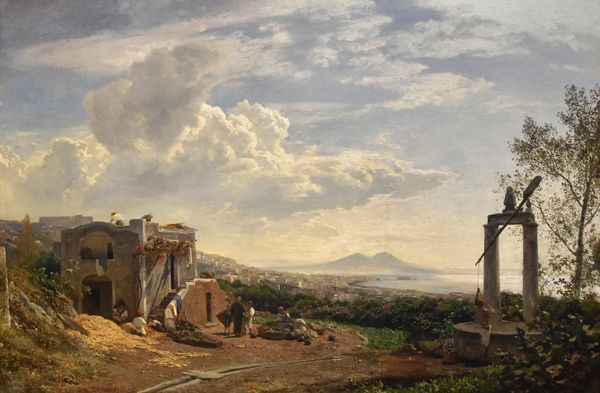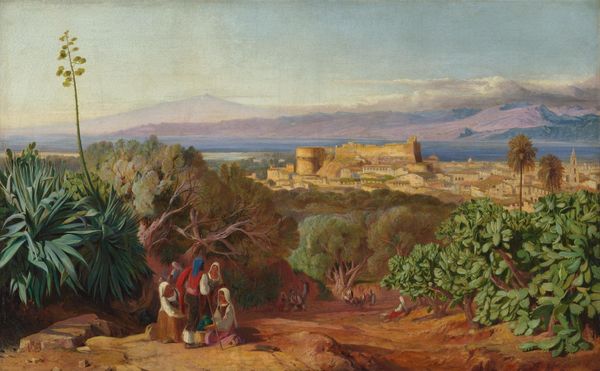
painting, oil-paint
#
painting
#
oil-paint
#
landscape
#
figuration
#
oil painting
#
romanticism
#
cityscape
#
genre-painting
#
realism
Dimensions: 66 x 125 cm
Copyright: Public domain
Curator: This idyllic scene, titled "A Terrace in Capri," comes to us from Hermann David Salomon Corrodi. It's an oil painting offering a glimpse into everyday life by the sea. Editor: My immediate impression is one of leisurely industry. There’s a vibrancy to the colors and a grounded feel to the composition that draws me in. Curator: Absolutely. Let’s delve into the social context. Consider the portrayal of women in this scene: occupied with labor, yes, but also presented with a certain dignity against the backdrop of the idyllic landscape. How does this juxtaposition speak to contemporary notions of gender and class? Editor: I’m drawn to the materiality. The tactile quality of the paint gives weight to the daily lives depicted here, rooting the scene in tangible realities—the feel of stone, the weave of cloth. What sort of labor went into creating this image of labor? Curator: That’s insightful. Looking closer, consider the Romantic idealization of peasant life blended with a burgeoning Realist approach to depicting labor. What we see may be a staged performance of tradition, intended for consumption. What is this fantasy fulfilling for its patron? Editor: And what kind of industry? The woman carefully threading grain—or what looks to be grain, at least—demands we look closer at these processes. Agriculture, harvest, preparation. This is pre-industrial labor. Curator: Indeed. The romantic vision softens what are certainly, were, demanding circumstances of the Italian lower classes. Consider also the orientalizing brushstrokes of the scene; Capri here becomes another point on the European Grand Tour, a location rife with commodified local experience. Editor: I wonder, how did Corrodi’s access to these spaces of labour operate, considering that this kind of artistry often relied on a specific relationship of power and wealth. How did he view and relate to his subjects? Curator: Exactly. It’s imperative to consider how artists navigated class lines and colonialist structures to produce these images. What social dynamics are inherent in representing "A Terrace in Capri"? Editor: For me, this highlights the necessity to challenge assumptions about the supposed transparency of realist portrayals, because any visual encoding carries intrinsic positionality. Curator: Ultimately, it encourages a critical engagement with the legacy of images that simultaneously romanticize and obscure the lived experiences of marginalized groups. Editor: A crucial reminder that visual consumption involves engaging with, and understanding, our own assumptions of what constitutes labour.
Comments
No comments
Be the first to comment and join the conversation on the ultimate creative platform.
